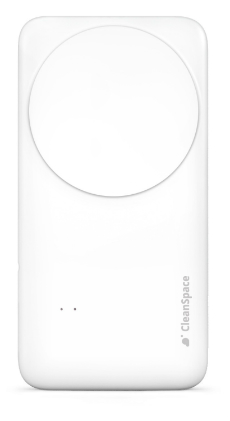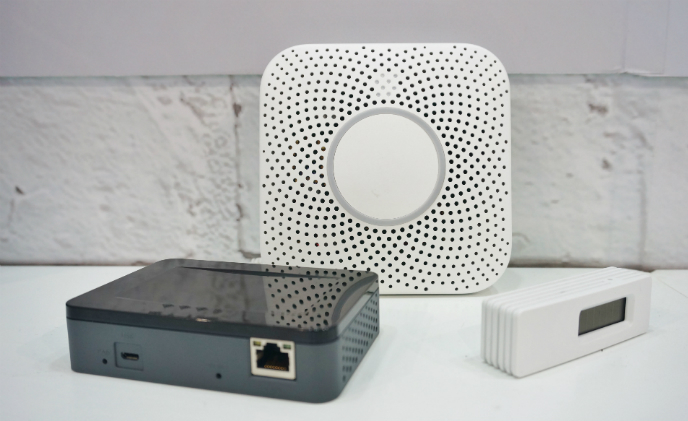According to the EPA, most people spend as much as 90 percent of their time indoors, and that indoor air levels of many pollutants may be 2-5 times, and in some cases, more than 100 times higher than outdoor levels.
According to the EPA, most people spend as much as 90 percent of their time indoors, and that indoor air levels of many pollutants may be 2-5 times, and in some cases, more than 100 times higher than outdoor levels.
Indoor air quality may be affected by a number of factors. For example, lack of ventilation, gas leakage, airborne particulate matter from outside or within the home, and VOCs from furniture, home décor or household products.
Poor air quality can have adverse health effects on people in the short run as well as in the long run. For those who suffer from respiratory problems, poor air quality can seriously affect their living quality.
To maintain good indoor air quality, knowing what is in the air is important because one can get a rough idea about the possible sources of pollution and try to remove or eliminate them accordingly. For example, if one finds the level of carbon dioxide being too high, they can open the window to ventilate. Knowing when the air quality becomes a concern is equally important, as some air pollutants like carbon monoxide can pose immediate danger and even take away lives if not taken care of quickly.
Smart air quality sensors provide users with the knowledge and the immediacy needed for maintaining healthy air around them. Common parameters monitored include temperature, humidity, levels of carbon monoxide, carbon dioxide, particulate matter (including PM2.5 and PM10) and VOCs.
Companies are leveraging advanced technologies like cloud computing, big data analysis and artificial intelligence to provide meaningful information for realizing advanced applications as well as to empower the users to make better informed decisions to improve the air they breathe in.
For example, AirVisual uses machine learning for forecasting air pollution movements, validating data points and sensor calibration. With the forecast, users can plan ahead their activities based on this information. With advanced analytics, the company also provides world air quality map based on data from 8,000 locations worldwide. The map is open to public access.
Portability is a popular feature for smart air quality sensors. Some devices can even be carried outdoors for continued monitoring of the air quality wherever the users go. Developed by Drayson Technologies, CleanSpace Tag is a portable smart air quality sensor that weighs just 51 grams. What is unique about the device is that it uses the company’s patented Freevolt technology to stay powered without having to be plugged in for charging. With this technology, wasted energy in wireless networks, such as cellular and Wi-Fi, can be harvested to power devices.
In this feature, we have picked 4 smart air quality sensors for the smart home.
1.
AirVisual
AirVisual Node
Wireless: Wi-Fi
Sensors: PM2.5, CO2, temperature, humidity
AirVisual Node is a smart air quality monitor with sensors for PM2.5, CO2, temperature and humidity. Through a successful Indiegogo campaign, the device raised a total of US$59,882 in April.
According to the company, the AirVisual Node was designed to medical-grade standards to be of special benefit to people who have asthma, COPD, lung cancer and high blood pressure.
The monitor uses auto-calibration components to take factors like temperature, humidity and outlying data points into consideration for provide more accurate numbers. It can also control mart home devices using action-based rules.
2.
Drayson Technologies
CleanSpace Tag
Wireless: BLE, GSM1800, Wi-Fi
Sensors: CO, temperature
Launched in September 2015, CleanSpace Tag has CO and temperature sensors and connects to the smartphone using Bluetooth. Being lightweight, portable and capable of outdoor measurement, the device can easily be part of users’ everyday lives for users to track personal pollution exposure in real-time. Data collected from the device would be anonymized and sent to the cloud for building an air pollution map for CleanSpace users.
“As people begin using the CleanSpace Tag on a mass scale, it will build a more granular, crowd-sourced live map of air pollution, firstly across the UK and then around the world,” said the company.
 Photo courtesy of CleanSpace
Photo courtesy of CleanSpace
3.
Kingmax Semiconductor Inc. (KINGMAX)
AirQ Check GS-01
Sensors: temperature, humidity, CO, CO2, tVOCs
AirQ Check GS-01 is a portable air quality monitoring device that can be plugged into Android smartphones, tablets and other mobile devices via Micro USB. It measures temperature, humidity, total level of VOCs (including formaldehyde, acetaldehyde, alcohol, and amine) and levels of CO and CO2. With the LED indicator, users can know just by glancing at the device if the air is fresh (green light/0~100 ppb), moderate (orange light/101~400 ppb) or poor (red light/>400 ppb). The device can be set to detect at intervals of 1s, 10s or 60s.
With the mobile app, users can not just monitor the air quality in real-time, they can also view up to 1 month of air quality history.
4.
Archgon International Ltd.
PM2.5 sensor
Wireless: EnOcean
Sensors: PM2.5, VOCs
Archgon’s PM2.5 sensor detects levels of PM2.5 and VOCs. The sensor takes measurements every 20 seconds at a PM2.5 range of up to 300 μg/m3. According to Bryan Wang at Archgon, the PM2.5 sensor uses the same IC as that used in the new Panasonic ECONAVI air conditioners, which has high accuracy.
The company’s self-developed gateway is required for the operation of the sensor, and the two communicate with each other via EnOcean. Wang said that EnOcean was chosen to offer energy-efficient operation. The gateway can also connect to Archgon’s other sensors via EnOcean, such as the solar-powered CO2 sensor. He added that the PM2.5 sensor will be launching in Taiwan first before other countries, and more sensors will come out in the future.
 Left to right: gateway, PM2.5 sensor, CO2 sensor
Left to right: gateway, PM2.5 sensor, CO2 sensor